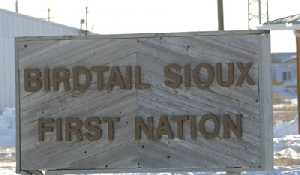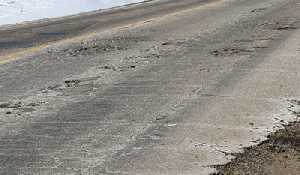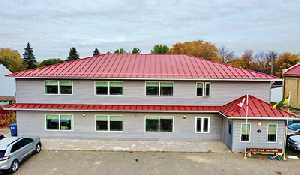Along TCH in Moosomin: Highways Ministry looking into safety issues
October 3, 2012, 4:55 am
Kevin Weedmark


While the death toll along the Trans-Canada Highway through Moosomin continues to rise-with one fatality resulting from a June 13 collision at the intersection of Highways 1 and 8-the Saskatchewan Ministry of Highways is reviewing safety at the intersections along the corridor.
Moosomin town council had raised concerns about the number of accidents on at the three intersections in town with Saskatchewan Highways, and two highways officials met with council April 20 to listen to their concerns.
Brent Miller, Director of Asset Management with the Ministry of Highways and Infrastructure, said the ministry is now reviewing data on the three intersections and should have completed its safety reviews by mid-July.
Miller was at the meeting with council in April.
"There were a couple of issues the town raised and brought forth," Miller said. "They said they wanted a reduction in speed and also suggested traffic signals. We said we would collect more data.
"At each of the three intersections we have done a delay study, where we watch and record how long a delay there is before vehicles can enter traffic. That goes toward whether traffic signals are warranted."
He said the information is still being analyzed. "The data has been collected but we haven't gone through the analysis yet," he said.
The ministry has also completed turning movement studies at each of three intersections.
"We record all movements at the intersections, how many people turn left, turn right, or go straight through. We look at every movement for all four legs of the intersection also record they type of vehicle," said Miller. "We did that for each of the intersections. The purpose of collecting that information is to determine if right turn lanes or flared intersections or bypass lanes are required. There are very many different treatments for intersections, and we look at them all when we do our analysis."
The ministry also monitored speeds along the highway through Moosomin. "We go out with a speed gun and collect that data to determine if there are any issues with the speed. Speed differentials is a bigger concern than actual speeds, if there's a big differential between the speeds that's a concern."
"In the second or third week of July we're hoping to have the data analyzed and we will be going back to the town," said Miller.
"We will give the town a written letter explaining our findings and we will also offer to the town a face to face meeting with them, so if they have questions or concerns we can address them."
How quickly any safety improvements are done may depend on whether the town is willing to cost share on them.
"If we find that safety improvements are warranted, those improvements would go into our safety improvement program and they would be competing against other projects across the province," said Miller. "Each safety improvement gets a score based on importance and cost-benefit analysis.
"The score will determine when the work would be done. It goes in the queue, and if it's near the bottom of the list, it may take many years.
"We do offer cost sharing options. If a safety improvement rates low on the priority list because of the cost, when our stakeholders come to us and offer up cost sharing, it changes the cost benefit analysis quite a bit and can move it up significantly on the list."
Statistics compiled by the RCMP show that the number of accidents in the Moosomin area jumped significantly after the twinned section of Trans-Canada Highway was opened around the town of Moosomin on Nov. 6, 2008.
The number of accidents recorded by the RCMP for the Moosomin detachment area jumped significantly, from 106 in 2007-the last complete year the highway was not twinned and traffic had to slow down through Moosomin-to 117 in 2008, when the twinned highway was open for two months-to 152 in 2009 and 178 in 2010.
The RCMP data also shows that the number of injuries and fatalities as a result of highway collisions in the Moosomin detachment area has more than doubled in the two years from 2008 to 2010.
In 2008, before the twinning, there were a total of 23 injuries and no deaths in highway accidents in the Moosomin detachment area-18 minor injuries and five moderate injuries.
In 2010, after the highway was twinned, there were more than twice as many injuries and deaths-24 minor injuries, nine moderate injuries, five major incapacitating injuries and 11 fatalities, for a total of 49, according to the RCMP figures.
Separate data from SGI shows that the section of the Trans-Canada Highway from Moosomin to the Manitoba border has the highest accident rate of any section of the Trans-Canada in Saskatchewan, and that Moosomin has twice the provincial accident rate.



































